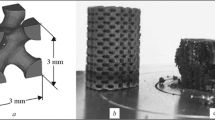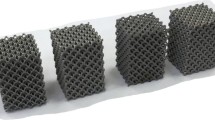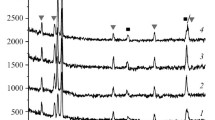Conclusions
-
1.
In ingots of titanium alloys with a relatively small range of crystallization temperatures, in which there are single closed shrinkage cavities, there are no sharp changes in the structure or hardness in the area of the cavity. Therefore we recommend elimination of the cavity during deformation.
-
2.
In ingots of titanium alloys with a large range of crystallization temperatures, in which the shrinkage cavities are scattered, the small cavities are oxidized as the result of contact with the atmosphere of the furnace, and therefore the cavities cannot be eliminated during deformation.
Similar content being viewed by others
Literature cited
A. D. Makkvillen, M. K. Makkvillen, Titanium [in Russian], Metallurgizdat, (1958).
Additional information
Translated from Metallovedenie i Termicheskaya Obrabotka Metallov, No. 6, pp. 23–27, June, 1964
This work was done under the direction of V. I. Dobatkin. L. P. Evdokhina, A. M. Legkodukh, and N. S. Goncharik participated in this work.
Rights and permissions
About this article
Cite this article
Elagina, L.A. Composition and structure of titanium alloy ingots in the area of the shrinkage cavity. Met Sci Heat Treat 6, 356–360 (1964). https://doi.org/10.1007/BF00775327
Issue Date:
DOI: https://doi.org/10.1007/BF00775327




